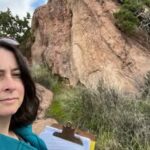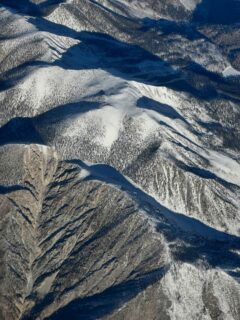With postdoctoral researcher Dr. Jiaqi Li, we modeled SH wave travel times and found that the SH-wave speed in the top 8 km of the crust under the lander is systematically lower than the vertically polarized shear (SV) wave speed previously obtained from receiver functions (e.g. Knapmeyer-Endrun et al., 2021). We interpreted this difference in wave speed with the wave direction of polarization as the signature of seismic anisotropy under the lander.

Seismic anisotropy in the crust is usually attributed to the layering of material with contrasting elastic properties, such as the presence and preferred alignment of melt pockets or the distribution of fluid-filled cracks, microcracks, or preferentially oriented pore spaces. Through modeling, we showed that dry or liquid-filled cracks/fractures and igneous intrusions can reproduce the observed amplitude and sign (i.e. an anisotropy coefficient 𝜉=(𝑉𝑆𝐻/𝑉𝑆𝑉)2 between 0.7 and 0.9), giving new insight on the structure of the crust under the lander.
Li, J., Beghein, C., Wookey, J., Davis, P., Lognonné, P., Schimmel, M., Stutzmann, E., Golombek, M., Montagner, J.-P., and Banerdt, W. (2022), Evidence for Crustal Seismic Anisotropy at the InSight Lander Site, Earth Planet. Sc. Lett., 593, 117654, doi: 10.1016/j.epsl.2022.117654.































































